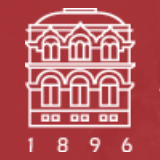Introduction to the Bulgarian National Academy of Arts
I. Introduction and Overview
The Bulgarian National Academy of Arts is the top art school in Bulgaria, which brings together many outstanding artists and art educators and occupies a core position in the field of art in Bulgaria. The academy offers professional courses covering multiple art fields, and has trained a large number of professionals with outstanding artistic talents and innovative spirit, which has had a profound impact on the development of Bulgarian culture and art.
II. History and Establishment
The history of the academy can be traced back to 1878. It was originally called the Painting School and was the first professional art education institution in Bulgaria. Over time, the school has continued to grow and has undergone several name changes and reorganizations. In 1933, the school was renamed the National Academy of Arts and became an important center of art education in Bulgaria. It has maintained an excellent tradition in the field of art education and creation.
III. School Strength
Teaching Staff: It has a team of teachers who enjoy a high reputation in the art world at home and abroad, including well-known painters, sculptors, musicians, dancers, dramatists, etc. These teachers not only have profound artistic attainments, but also have rich teaching experience, and can give students professional guidance and inspiration.
Artistic achievements: The college has trained many outstanding artists who have made remarkable achievements on the international art stage and won honor for Bulgaria. The works of teachers and students of the college have won great results in various art exhibitions and competitions, promoting the development and dissemination of Bulgarian art.
International influence: Actively carry out international exchanges and cooperation, and establish extensive contacts with art schools and cultural institutions around the world. By holding international art exhibitions, academic seminars, student exchange programs and other activities, the college has enhanced its visibility and influence in the international art field.
IV. Nature of the college
The public art college, funded and supported by the Bulgarian government, aims to inherit and develop Bulgaria's art and culture, cultivate outstanding artistic talents, and promote the country's cultural prosperity.
V. Educational philosophy
Adhering to the educational philosophy of combining inheritance and innovation, it focuses on cultivating students' respect and understanding of traditional art, while encouraging students to explore and innovate in artistic creation. Emphasis is placed on cultivating students' artistic personality and aesthetic ability, so that students can find their own unique way of expression in the field of art. The college also focuses on cultivating students' sense of social responsibility and guides students to use art to contribute to social development and cultural exchanges.
VI. Key laboratories and disciplines
Key disciplines: The college has a number of art disciplines, including painting, sculpture, architecture, music, dance, drama, film and television, etc. Each discipline has its own unique teaching system and research direction, and has a high reputation in the Bulgarian and even international art fields. The painting major focuses on cultivating students' painting skills and artistic expression, covering multiple painting types such as oil painting, watercolor, and printmaking; the sculpture major emphasizes students' understanding and use of space and materials, and cultivates students' three-dimensional modeling ability; the music major provides teaching in multiple directions such as vocal music, instrumental music, composition, and music education, and has cultivated many outstanding musicians and music educators.
Key laboratories (studios): For different art disciplines, the college has corresponding studios and laboratories to provide students with a platform for practice and creation. For example, the painting studio is equipped with professional painting equipment and materials for students to sketch and practice creation; the sculpture studio has a variety of sculpture tools and materials, as well as advanced digital engraving equipment to support students in sculpture creation; the music recording laboratory provides students with professional recording and mixing equipment to help students record and post-produce music works.
VII. Departments
The college has several departments, including the Department of Fine Arts, the Department of Music, the Department of Dance, the Department of Drama and Film, etc. Each department is responsible for teaching, research and creative activities in the corresponding art field, and the departments cooperate with each other to jointly promote the development of the college.
VIII. Ranking
In Bulgaria, the National Academy of Arts ranks top in the field of art and is a benchmark for Bulgarian art education. Internationally, although there is no widely recognized comprehensive ranking, it has a high reputation and influence in the field of art, especially in the leading position among art schools in Eastern Europe.
IX. Fees
For Bulgarian students, tuition fees are relatively low and they enjoy government education subsidies. Tuition fees for international students vary according to different majors and courses, generally around 3,000-6,000 euros per year. The college also provides scholarships and grants to outstanding students to support their studies and creations.
X. Campus Environment
Geographic location: Located in Sofia, the capital of Bulgaria, it has a superior geographical location and a strong cultural atmosphere. As the cultural center of Bulgaria, Sofia has many cultural venues such as art museums, theaters, and concert halls, providing students with rich art resources and opportunities to appreciate works of art.
Campus facilities: The campus has a unique architectural style and is full of artistic atmosphere. It has modern teaching buildings, art studios, concert halls, theaters, libraries and other facilities. The teaching building is equipped with advanced teaching equipment to provide students with good learning conditions; the art studio provides students with a spacious and bright creative space; the concert hall and theater have professional sound and lighting equipment, and can host various concerts, drama performances and other art activities; the library has a large collection of art books, periodicals, picture albums and audio-visual materials, providing rich resources for students' study and research.
-
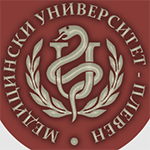
Medical University-Pleven
-
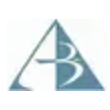
Burgas Prof. Assen Zlatarov University
-
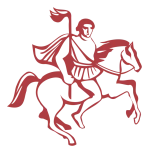
Trakia University
-

Varna University of Management
-

Technical University - Sofia
-
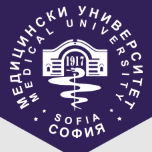
Medical University of Sofia
-

Plovdiv University
-
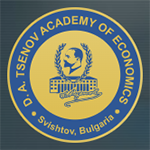
D. A. Tsenov Academy of Economics
-

Sofia University
-
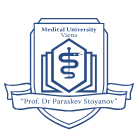
Medical University-Varna
-

Mesoamerican University
-

Istmo University
-

Mariano Galvez University of Guatemala
-

Regional University of Guatemala
-

Galileo University
-

Francisco Marroquín University
-

Rafael Landívar University
-

University of the Valley of Guatemala
-

University of San Carlos of Guatemala
-

Technological Institute of Tlaxcala Plateau
-

Golfo University
-

Technological University of South Sonora
-

Technological University of Huejotzingo
-

Tizimín Institute of Technology
-

Chilpancingo Institute of Technology

